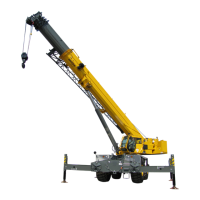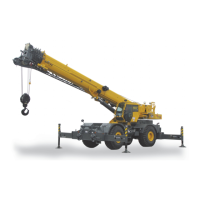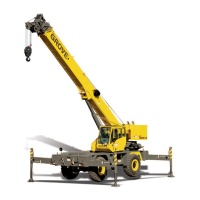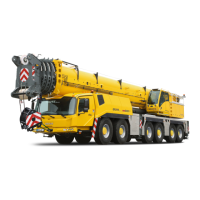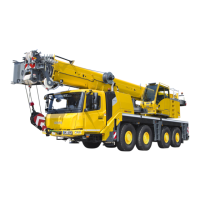SET-UP AND INSTALLATION RT9130E-2 OPERATOR MANUAL
4-26
Published 3-1-2018, Control # 559-03
Establish Electrical Connection Between Boom
Extension and Anti-Two Block Switch
NOTE: The anti-two block switch supplied with the jib is
used for operation of the 11 m (36 ft) and 59 ft
sections. The junction box connection for the
section that is not in use must be overridden with a
bypass plug.
1. Install the anti-two block switch on the appropriate pin
near the nose sheave of the section being used. Secure
the switch to the jib with a retaining clip.
2. Remove the bypass plug and connect the wire from the
anti-two block switch to the junction box located near the
nose sheave.
Disconnecting
Disconnect the Electrical Connection Between the
Jib and the Main Boom
1. Disconnect the jib cable from the boom nose junction
box.
2. Wind the cable onto the jib for storage.
3. Connect the cable to the dummy plug on the jib adapter.
4. Install the bypass plug into the open connector on the
boom nose junction box.
Disconnect the Hydraulic Connection Between the
Jib and the Main Boom
1. Disconnect the jib hoses from the drum hoses. Do not
detach the drum hoses from the boom nose.
When working with the main boom for longer periods of time,
the hydraulic hoses should be disconnected from the boom
nose and retracted to the hose drum. This prevents
unnecessary reeling and unreeling of the hose.
2. Remove the hoses from the boom nose. Retract the
hydraulic hoses to the holder on the boom base section.
3. Engage hose drum lock pin into hole on drum.
4. Wind the hoses onto the jib for storage.
5. Install dust caps attached to all couplings on the jib and
the drum hoses.
Swingaway Mounting Adjustment
Refer to (Figure 4-15).
1. Set the 11 m (36 ft) section with the 7 m (23 ft) section
stowed on the side, on cribbing. Use an adequate lifting
device to place the jib at the side of the boom. Make the
connection at the front stowage bracket and support with
lifting device (Detail A).
2. Refer to Detail A (front stowage bracket). Pivot the jib on
the front support bracket. Adjust the front support
bracket adjustment bolts to maintain a loose condition
when the jib anchor fittings (10) engage the boom
anchor lugs (11).
3. Secure the guide rail on the middle jib stowage bracket
in the out position.
4. Swing the jib until it contacts the guide rail at the middle
jib stowage bracket (Detail B).
NOTE: When pushing the jib extension onto the guide rail,
make sure contact does not occur at the rear jib
mounting bracket and prevent proper alignment.
5. Adjust the middle stowage bracket so the roller supports
on the 11 m (36 ft) section roll on the guide rail and aligns
the roller support on the 7 m (23 ft) section. This should
align the hole in the mounting lug on the 7 m (23 ft) (7m)
section with the hole in the mounting piece on the
stowage bracket. When adjusted properly, the pin (9)
can be inserted to make the stowage connection.
6. Referring to Detail C (rear stowage bracket), adjust the
adjustment bolts on the rear support bracket to support
the jib and provide installation of attach pins (16b).
7. Remove the lifting device used for support after the jib is
properly adjusted and secure.
Jib—with Inserts
Identification
The jib consists of the 18 m (59 ft) two-stage swingaway
lattice extension and two jib inserts. The jib is designed for
the crane it was delivered with. The parts belonging to the
crane have the same serial number as the crane.
The following parts are labelled with the serial number:
• all parts of the 18 m (59 ft) two-stage swingaway lattice
extension
• both sections of the jib 8 m (26 ft) inserts.
WARNING
If the hose couplings are detached from the boom after
the hose drum lock pin has been released, do not release
the hose couplings until they have been attached to the
boom. If the hose couplings are released after being
detached from the boom, the hoses will spring back
uncontrollably due to the spring force in the hose drum.
CAUTION
Operate the crane only with those sections of the jib which
have the same serial number as the crane.This prevents
malfunctions and damage.
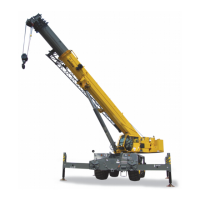
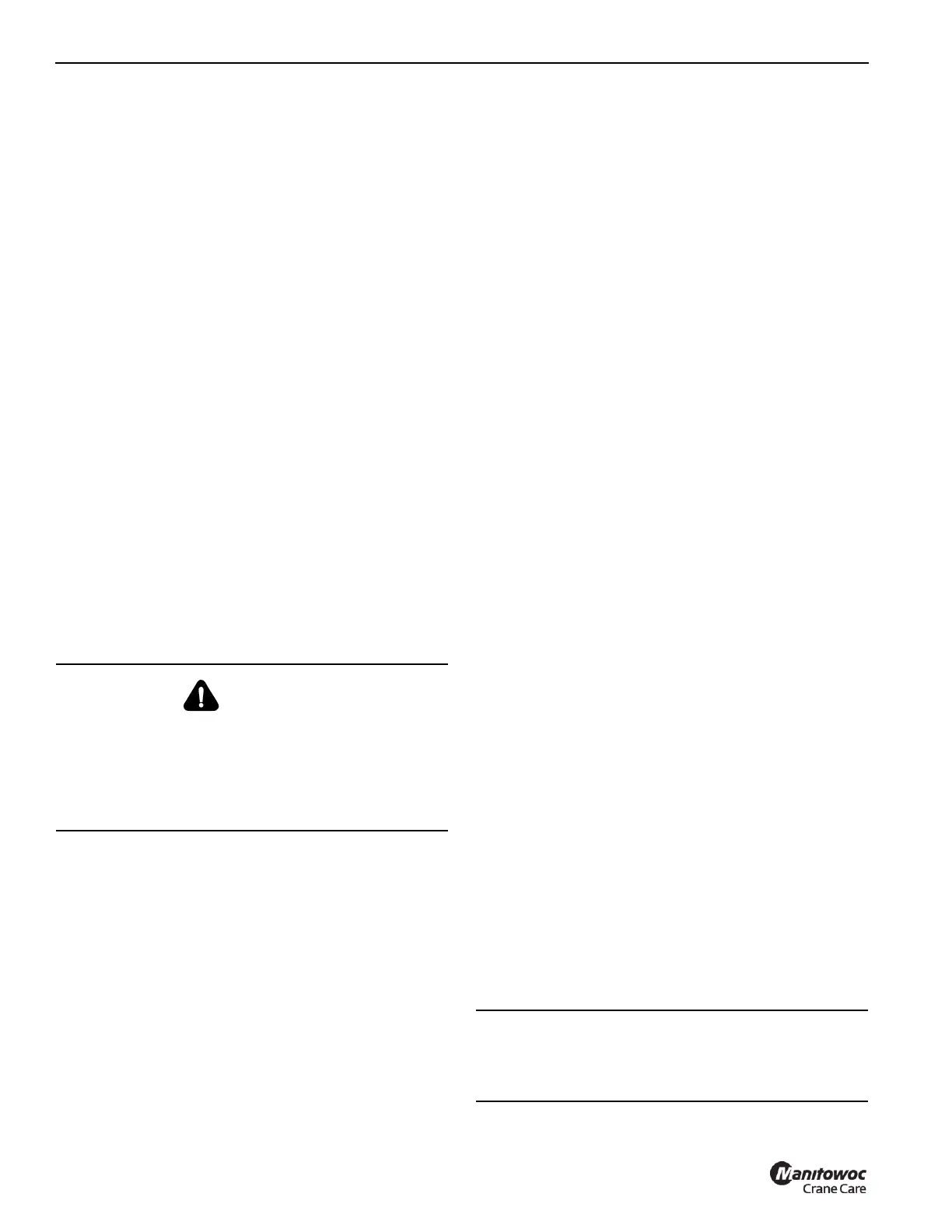